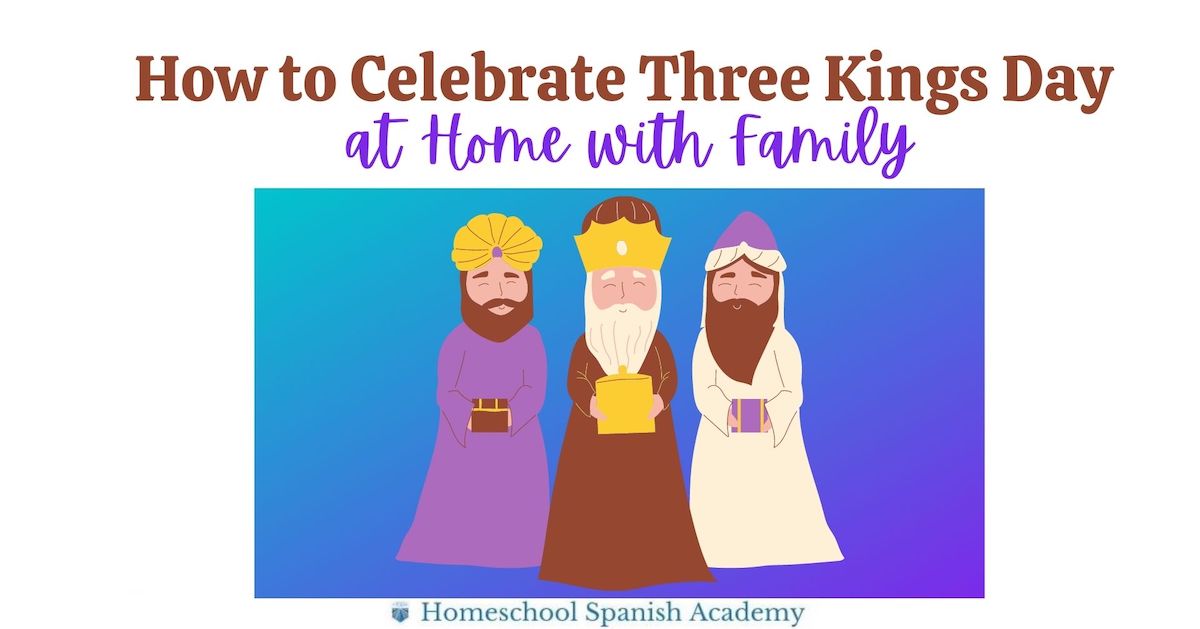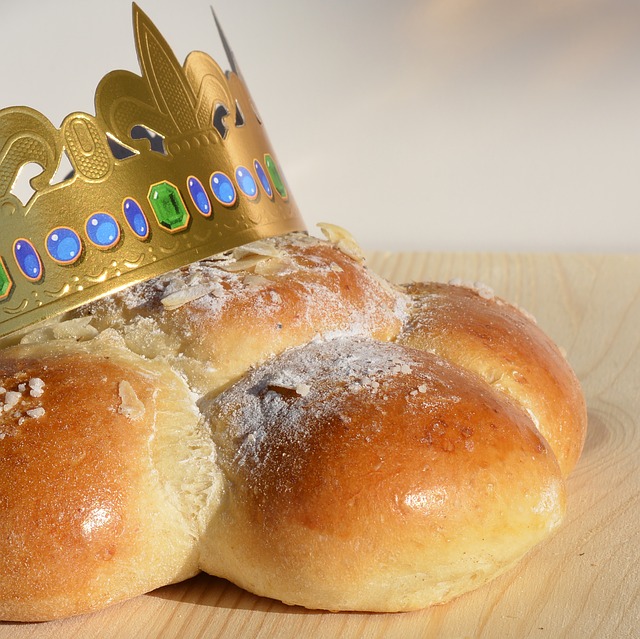
How to Celebrate Three Kings Day in Spanish at Home
The story of Three Kings Day begins with the foretelling of baby Jesus’ birth. When three wise kings saw a bright star in the sky, they knew that the messiah had been born. They decided to follow its light and bring gifts to the newborn baby.
Their gifts were symbolic gestures that represented different virtues. Gold, to recognize his nobility. Frankincense, to pay homage to his divinity. Myrrh, as a recognition of his role as the redeemer.
Three Kings Day is celebrated every year on January 6th. Most Latin American families have a giant celebration for Christmas, and only some families hold a smaller gathering for Three Kings Day. In Christian communities in the U.S., this holiday is known as Epiphany.
Nevertheless, the tradition is alive and ongoing. Let’s explore how to celebrate this day!
The Origin of Three Kings Day
With historic accounts, there are different theories and interpretations on how things happened. I’ll be offering but one of the many versions of the story. Just like with Latin American legends and folklore, the stories often change from one region to the next.
The only mention of Three Kings Day in the Bible is in the Gospel of Matthew, but no details on the people who arrived at the birthplace of Jesus in Bethlehem are specified. So, how come we have three kings named Melchoir, Gaspar, and Balthasar?
It wasn’t until about three centuries after Christ’s death that they were considered kings, although it was always known that they were well-off because of the value of the gifts they brought.
Their original names had more relation to the Spanish word magos, which means magicians. This would be a strange thing to call them since Christianity often denounces magic (with the exception of card tricks and hat bunnies)—but the real meaning of the word in this context is wise rather than sorcerous. That’s why in some countries, Three Kings Day translates to Día de Reyes Magos.

4 Ways to Celebrate Three Kings Day at Home
1. Rosca de Reyes
Every year in some Latin American countries, bakeries sell a type of sweet bread called Rosca de Reyes (“King Cake”). This treat is loved by many and disliked by some, but the fun of this tasty bun goes beyond eating it. The bread comes in the form of a ring, like a big donut, where one of the sections contains a small, white figurine of baby Jesus.
On Three Kings Day, everyone takes a piece of the bread, often sectioned to avoid cutting through the figurine. Whoever gets the plastic figurine in their bread piece will have good luck for the rest of the year. Always make sure to avoid choking hazards! Look for the figurine before you chow down on the bread. Also, the lucky winner has to buy tamales and fruit punch for the people who ate the bread with them on November 2nd.
Honestly, buying tamales for my 20 cousins doesn’t sound like good luck! If you live somewhere where you can’t buy Rosca de Reyes, you can reenact this tradition by putting an image of baby Jesus under a paper plate and handing them out randomly for everyone to turn over once they finish eating.
2. Nativity Scene
The Nativity scene is one of my favorite Christmas traditions. It consists of a diorama depicting the scene of Jesus’ birth that grows and develops over time.
The changes coincide with a series of traditions that, in Guatemala, start with La Quema del Diablo on December 7th. It’s a festivity to prepare for El Día de la Inmaculada Concepción on December 8th, a day celebrating Virgin Mary. However, since Jesus’ birth is celebrated on December 25th, the cradle has to be empty.
On December 24th, at midnight, the figurine of baby Jesus is placed on the cradle to celebrate his birth. Then, at midnight on December 31st, baby Jesus is dressed in ornamental clothing.
On January 6th, Three Kings Day, families place the three wise men on the Nativity scene to celebrate their arrival, and the scene is removed on February 2nd to commemorate the day baby Jesus was presented in the temple of Jerusalem.
That’s a pretty long and complex tradition! Usually, local markets sell decorations for the Nativity scene. However, if you’re not near a Latin American mercado, you can always make the Nativity scene with printed figurines. It really is the thought that counts!
3. Cabalgata de los Reyes Magos
La Cabalgata de los Reyes Magos is a religious parade that takes place on Three Kings Day in some countries. These feature big, heavy structures depicting different religious figures that are slowly carried through the streets by dozens of people. This is fun to watch if you’re walking about, but not fun if you’re in your car and you need to get to your morning meeting on time. Make sure you plan your schedule around these parades! Usually, the local municipality will let you know ahead of time which streets will be closed.
4. Storytime
Three Kings Day is not a holiday that’s loudly celebrated outside Spain. Even in Latin America, the celebrations are mostly intimate and small, so you can take advantage of this by doing some storytelling. Grab a children’s book to tell this story, or recite it by memory if you prefer. You could even turn it into a movie night! There are many children’s movies that tell this story, so you can grab some popcorn or Rosca de Reyes and watch the movie together.
Celebrating Three Kings Day in Spanish
Now that you know everything you need to know about Three Kings Day, let’s look at some vocabulary words to learn so you can share what you learned about this holiday with Spanish speakers, too.
Nativity Scene Vocabulary
| English | Spanish |
| Nativity scene | Nacimiento |
| Baby Jesus | Niño Jesús |
| Joseph | José |
| Mary | María |
| Stable | Establo |
| Shepherd | Pastor |
| Decorations | Decoraciones |
Fun Fact: The word for priest and shepherd in Spanish is the same: el pastor.
Three Kings Day Vocabulary
| English | Spanish |
| Three Wise Men | Tres Reyes Magos |
| Gold | Oro |
| Frankincense | Incienso |
| Myrrh | Mirra |
| Gospel of Matthew | Evangelio de Mateo |
| Star | Estrella |
| Gifts | Regalos |
Celebrating Three Kings Day is Fun
The story of the Three Kings is one of the most memorable stories in the Bible. It is a milestone in a series of end-of-year celebrations that relate to the end of a cycle, originally meant to give us the strength to power through the darkest and final stretches of winter.
Latin America seldom has to worry about cold weather, but these traditions are so powerful that they transcended that. They are stories that teach us about life, growth, and love prevailing over all. Three Kings Day is one of the events that mark the beginning of these stories, and traditions such as Rosca de Reyes are representative of that.
What are your plans for this wonderful celebration? Let me know in a comment!

Check out our latest posts!
- Celebrating Culture and Joy: The Magic of Carnival in Spanish-Speaking Countries
- 15 Mouth-Watering National Dishes of Latin America
- Discovering The Mayan Languages
- The 10 Most Common Spanish Surnames in The U.S
- Everything About Mexican Christmas Traditions
- What Is the Hispanic Scholarship Fund? Is It Legit?
- A Spanish Guide to Thanksgiving Food Vocabulary
- How Did All Saints Day Celebrations Started?
- 60 Best New Year Quotes in Spanish 2024 - January 18, 2024
- Top 15 New Year’s Resolutions in Spanish - January 11, 2024
- 10 Amusing Facts About Spanish Culture and Traditions - February 5, 2023




